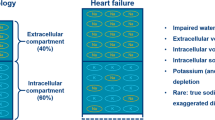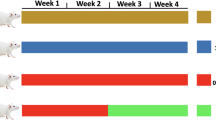Abstract
This work investigates whether purine metabolism and release is related to cardioprotection with hyperkalemia and hypothermia. Langendorff guinea-pig hearts were used to either monitor metabolism during ischemia or to measure functional recovery, myocardial injury and release of purine during reperfusion. Hearts underwent 30 min ischemia using one of the following protocols: control (normothermic buffer), hyperkalaemia (high-potassium buffer), hypothermia (20°C) and hyperkalemia + hypothermia. At the end of 30 min ischemia, hyperkalemia was associated with similar metabolic changes (rise in purine and lactate and fall in adenine nucleotides) to control group. Accumulation of purine was due to a rise in inosine, xanthine and hypoxanthine and was largely prevented by hypothermia and hyperkalemia + hypothermia. Upon reperfusion, there was a time-dependent release of all purine, lactate and AMP. A fast (peak in less than 20 sec) release of inosine, xanthine, hypoxanthine and lactate was highest in control followed by hyperkalemia then hypothermia and little release in hyperkalemia + hypothermia. Adenosine and AMP release was slow (peak at 3 min), only significant in control and was likely to be due to sarcolemmal disruption as the profile followed lactate dehydrogenase release. Recovery (left ventricular developed pressure) was 63% control, 82% hyperkalemia, 77% hypothermia and 98% for hyperkalemia + hypothermia. The loss of purine during reperfusion but not their production during ischemia is related to cardioprotection with hyperkalemia. The possibility that the consequences of hyperkalemia modulate a sodium-dependent purine efflux, is discussed. The reduced loss of purine in hypothermia or in hyperkalemia + hypothermia is likely to be due to a lower metabolic activity during ischemia.
Similar content being viewed by others
References
Melrose DG, Dreyer B, Betall HH, Baker JBE: Elective cardiac arrest. J Thorac Cardiovasc Surg 2: 21–22, 1995
Demmy TL, Haggerty SP, Boley TM, Curtis JJ: Lack of cardioplegic uniformity in clinical myocardial preservation. Ann Thorac Surg 57: 648–651, 1994
Hearse DJ: Cardioplegia: The protection of the myocardium during open heart surgery: A review. J Physiol 76: 751–768, 1980
Jynge P: Protection of the ischemic myocardium: cold chemical cardioplegia, coronary infusates and the importance of cellular calcium control: Thorac Cardiovasc Surg 28: 312–321, 1980
Hearse DJ, Stewart DA, Braimbridge MV: The additive protective effects of hypothermia and chemical cardioplegia during ischemic cardiac arrest in the rat. J Thorac Cardiovasc Surg 79: 39–43, 1980
Ou R, Gavin JB, Esmore DS, Rosenfeldt FL: Increased temperature reduces the protective effect of University of Wisconsin solution in the heart. Ann Thorac Surg 68: 1628–1635, 1999
Preusse CJ, Gebhard MM, Bretschneider HJ: Interstitial pH value in the myocardium as indicator of ischemic stress of cardioplegically arrested hearts. Basic Res Cardiol 77: 372–387, 1982
Rosenfeldt FL, Hearse DJ, Cankovic-Darracott S, Braimbridge MV: The additive protective effects of hypothermia and chemical cardioplegia during ischemic cardiac arrest in the dog. J Thorac Cardiovasc Surg 79: 29–38, 1980
Spinale FG: Cellular and molecular therapeutic targets for treatment of contractile dysfunction after cardioplegic arrest. Ann Thorac Surg 68: 1934–1941, 1999
Cohen G, Borger MA, Weisel RD, Rao V: Intraoperative myocardial protection: Current trends and future perspectives. Ann Thorac Surg 68: 1995–2001, 1999
Suleiman MS, Halestrap AP, Griffiths EJ: Mitochondria: A target for myocardial protection. Pharmacol Ther 89: 29–46, 2001
Abd-Elfattah AS, Wechsler AS: Separation between ischemic and reperfusion injury by site specific entrapment of endogenous adenosine and inosine using NBMPR and EHNA. J Card Surg 9(suppl 3): 387–396, 1994
Goto M, Cohen MV, Van Wylen DGL, Downey JM: Attenuated purine production during subsequent ischemia in preconditioned rabbit myocardium is unrelated to the mechanism of protection. J Mol Cell Cardiol 28: 447–454, 1996
Juggi JS, Al-Awadi F, Joseph S, Telahoun G, Prahash A: Ischemic preconditioning is not additive to preservation with hypothermia or crystalloid cardioplegia in the globally ischemic rat hear. Mol Cell Biochem 176: 303–313, 1997
Imura H, Caputo M, Parry A, Pawade A, Angelini GD, Suleiman MS: Agedependent and hypoxia-related differences in myocardial protection during pediatric open heart surgery. Circulation 103: 1551–1556, 2001
Arad M, deJong JW, deJonge R, Huizer T, Rabinowitz B: Preconditioning in globally ischemic isolated rat hearts: Effect on function and metabolic indices of myocardial damage. J Mol Cell Cardiol 28: 2479–2490, 1996
Hirai K, Ashraf M. Modulation of adenosine effects in attenuation of ischemia and reperfusion injury in rat heart. J Mol Cell Cardiol 30: 1803–1815, 1998
Matherne GP, Headrick JP, Berr S, Berne RM: Metabolic and functional responses of immature and mature rabbit hearts to hypoperfusion, ischemia and reperfusion. Am J Physiol 264: H2141–H2153, 1993
Matherne GP, Ely SW, Headrick JP: Maturational differences in bioenergetic state and purine formation during ‘supply’ and ‘demand’ ischemia. J Mol Cell Cardiol 28: 1143–1155, 1996
Gustafson LA, Zuurbier CJ, Bassett JE, Barends JP, van Beek JH, Bassingthwaighte JB, Kroll K: Increased hypoxic stress decreases AMP hydrolysis in rabbit heart. Cardiovasc Res 44: 333–343, 1999
Kerr PM, Suleiman MS, Halestrap AP: The effect of pyruvate on Krebs buffer pH and lactate efflux from ischemic and reperfused isolated rat hearts. J Physiol (Lond) 501: (abstr) 136P, 1997
Taegtmeyer H, Goodwin GW, Doenst T, Frazier OH: Substrate metabolism as a determinant for postischemic functional recovery of the heart. Am J Cardiol 80: A3–A10, 1997
Cleveland JC, Meldrum DR, Rowland RT, Banerjee A, Harken AH: Optimal myocardial preservation: Cooling, cardioplegia, and conditioning. Ann Thorac Surg 61: 760–768, 1996
Suleiman MS, Chapman RA: Effect of temperature on the rise in intracellular sodium caused by calcium depletion in ferret ventricular muscle and the mechanism of the alleviation of the calcium paradox by hypothermia. Circ Res 67: 1238–1246, 1990
Amrani M, Ledingham S, Jayakumar J, Allen NJ, Rothery S, Severs N, Yacoub M: Detrimental effects of temperature on the efficacy of the University-of-Wisconsin Solution when used for cardioplegia at moderate hypothermia - comparison with the St.-Thomas-Hospital solution at 4 and 20°C. Circulation 86: 280–288, 1992
Mollhoff T, Sukehiro S, Hendrickx M, Van Belle H, Flameng W: Effects of hypothermic ischemia on purine catabolism in canine, primate, and human myocardium. Thorac Cardiovasc Surg 39: 187–192, 1991
Haddock PS: Evidence for sodium-dependent hypoxanthine uptake in isolated guinea-pig ventricular myocytes-stimulation by extracellular Ni2+. Cardiovasc Res 30: 130–137, 1995
Ritzel MWL, Ng AML, Yao SYM, Graham K, Loewen SK, Smith KM, Hyde RJ, Karpinski E, Cass CE, Baldwin SA, Young JD: Recent molecular advances in studies of the concentrative Na+-dependent nucleoside transporter (CNT) family: Identification and characterization of novel human and mouse proteins (hCNT3 and mcnt3) broadly selective for purine and pyrimidine nucleosides (system CIB). Mol Membr Biol 18: 65–72, 2001
Buckberg GD: Update on current techniques of myocardial protection. Ann Thorac Surg 60: 805–814, 1995
Suleiman MS, Dihmis WC, Caputo M, Angelini GD, Bryan AJ: Changes in the intracellular concentration of glutamate and aspartate in hearts of patients undergoing coronary artery surgery. Am J Physiol 272: H1063–H1069, 1997
Author information
Authors and Affiliations
Rights and permissions
About this article
Cite this article
Imura, H., Ayres, B.E. & Suleiman, MS. Purine metabolism and release during cardioprotection with hyperkalemia and hypothermia. Mol Cell Biochem 237, 119–127 (2002). https://doi.org/10.1023/A:1016551720672
Issue Date:
DOI: https://doi.org/10.1023/A:1016551720672




